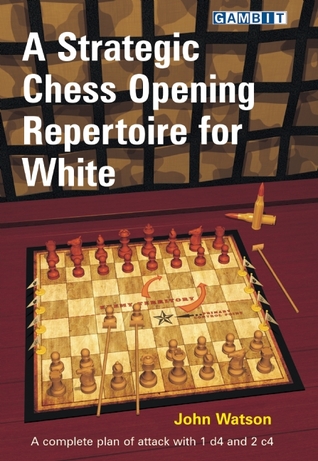Strategic Opening Repertoire For White
A STRATEGIC CHESS OPENING REPERTOIRE FOR WHITEAuthor: John Watson272 pages (248 mm by 172 mm)"widely regarded as one of the most influential chess writers in the world." - IM John Donaldson, Former USA Team Captain "arguably the most important writer in American chess history." - Pete Tamburro, Chess LifeSuch has been the acclaim for John Watson's ground-breaking works on modern chess strategy and his insightful opening books, that it is only natural that he now presents a strategic opening repertoire.It is the chess-player's holy grail: a flexible repertoire that gives opponents real problems but doesn't require masses of memorization or continual study of ever-changing grandmaster theory. While this book can't quite promise all of that, Watson offers an intriguing selection of lines that give vast scope for over-the-board creativity and should never lead to a dull draw.The repertoire is based on 1 d4 and 2 c4, then following up with methodical play in the centre. Watson uses his vast opening knowledge to pick cunning move-orders and poisonous sequences that will force opponents to think for themselves, providing a true test of chess understanding. Throughout the book he discusses strategies for both sides. Readers will be fully ready to pounce on any inaccuracies, and have all the tools to decide on the most appropriate plans for White.DETAILED DESCRIPTION OF REPERTOIREWhite avoids an early Nf3 in most lines, to give maximum flexibility, especially vs the QGD, Nimzo, KID and Grünfeld. Move-order issues are given great prominence, including even potentially awkward sequences that as yet have not been tried much in practice. In most cases, more than one option is presented for White, and there are a great many additional suggestions that the reader may wish to investigate. Material is scrupulously researched and up-to-date. Many ideas for Black are discussed, and remedies proposed, even when they have not yet caught on in practice as yet, thus future-proofing the repertoire to some degree. Dangerous gambits and sharp counterattacking lines are dealt with, as far as possible, in ways that avoid excessive complications. The overall aim in each opening is to reach an interesting position (ideally with some advantage, of course) where there is scope to outplay the opponent, while avoiding getting embroiled in a do-or-die tactical battle.

